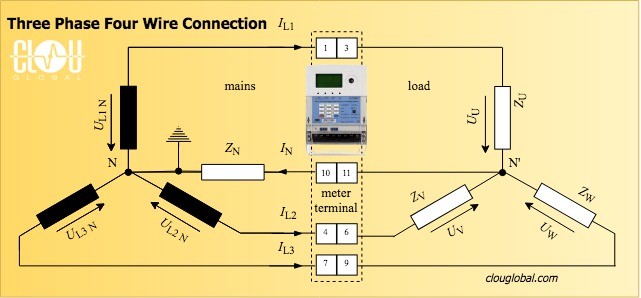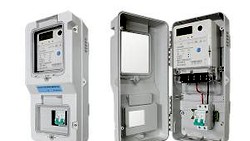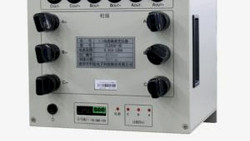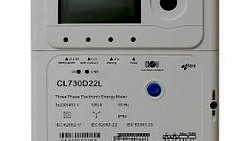In electrical power systems, the concept of sequence components is used to analyse the behaviour of three-phase systems. This approach involves representing the three-phase system as a set of three components, known as positive-sequence, negative-sequence, and zero-sequence components. These sequence components have different impacts on electrical energy measurements.
Positive-Sequence Impact
The positive-sequence component of a three-phase system represents the balanced component of the system. In a balanced system, the three-phase voltages and currents are equal in magnitude and phase, and the sum of the three-phase currents is zero. In a balanced system, the positive-sequence component has no impact on the neutral current and, therefore, does not affect active-, reactive-, or apparent energy measurements.
However, in an unbalanced system, the positive-sequence component may still be present, but it is typically much smaller than the negative-sequence or zero-sequence components. In such cases, the positive-sequence component may be measured along with the other sequence components, but its impact on energy measurements is still relatively small.
Negative-Sequence Impact
The negative-sequence component of a three-phase system represents the unbalanced component of the system. In an unbalanced system, the negative-sequence current causes an increase in the neutral current, which can lead to inaccuracies in energy measurements. This increase in neutral current can affect all three types of energy measurements:
- Active Power
The negative-sequence component of the current produces an active power that contributes to the power dissipated in the neutral wire. This can lead to inaccuracies in active power measurements, as the energy dissipated in the neutral wire is not being accurately accounted for. - Reactive Power
The negative-sequence component of the current can also produce reactive power, which can lead to an increase in the reactive power measurements. This can occur due to the increased voltage drop across the neutral wire, which can lead to an increase in the reactive power consumed by the loads connected to the system. - Apparent Power
The negative-sequence component of the current can cause an increase in the apparent power consumed by the system. This is due to the increased current flowing through the neutral wire, which increases the overall current flowing through the system and, therefore, the apparent power consumed by the system.
Zero-Sequence Impact

In a balanced three-phase system, the sum of the three-phase currents is zero, which means that no current flows through the neutral wire. However, in an unbalanced system, there may be a non-zero current flowing through the neutral wire, which is known as the zero-sequence current.
In an unbalanced system, the zero-sequence current can cause a significant increase in the neutral current, which can affect all three types of power measurements:
- Active Power
The zero-sequence current produces an active power that contributes to the power dissipated in the neutral wire. This can lead to inaccuracies in active energy measurements, as the energy dissipated in the neutral wire is not being accurately dimensioned for. - Reactive Power
The zero-sequence component of the current can also produce reactive power, which can lead to an increase in the reactive energy measurements. This is due to the increased voltage drop across the neutral wire, which can lead to an increase in the reactive power consumed by the loads connected to the system. - Apparent Power
The zero-sequence component of the current can cause an increase in the apparent power consumed by the system. This is due to the increased current flowing through the neutral wire, which increases the overall current flowing through the system and, therefore, the apparent energy consumed by the system.

How to get accurate measurements?
CLOU electronic energy meters have employed various techniques to overcome the impacts of positive-, negative-, and zero-sequence components on electrical energy measurements. Some techniques used are:
- Neutral Current Compensation
Our energy meters with neutral current compensation can accurately measure the current flowing through each phase and the neutral wire. By accurately measuring the current flowing through the neutral wire, the impacts of unbalanced current due to negative and zero-sequence components can be compensated for in the energy measurement. - Advanced Filtering Techniques
Advanced filtering techniques, such as Fourier Transform, accurately separate the positive-, negative-, and zero-sequence components of the current signal. This allows our energy meters to accurately measure the energy consumed by each phase, despite any unbalanced current due to sequence components. - Digital Signal Processing (DSP)
Our energy meters are using digital signal processing techniques to accurately measure and analyse the current and voltage waveforms in real-time. DSP allows the energy meter to detect and compensate for any unbalanced current due to sequence components, ensuring accurate energy measurement. - Phase Detection Algorithms
Our energy meters use phase detection algorithms to accurately detect and measure the phase angle of each phase. This allows the energy meter to accurately calculate the power factor and compensate for any reactive power due to unbalanced current. - Harmonic Analysis
Our energy meters with harmonic analysis capability can accurately calculate the harmonic content of the current and voltage signals. This allows the energy meter to detect any distortion due to unbalanced current, and compensate for it in the energy measurement.
At our company, we strive to provide high-quality energy meters that meet the required meter accuracy class, even under extreme unbalanced conditions. While not all of our meters utilize every advanced technique mentioned, we ensure that our meters are designed to perform reliably and accurately, even in challenging situations.
Takeaway
CLOU three-phase energy meters are using a combination of advanced techniques, such as neutral current compensation, advanced filtering techniques, digital signal processing, phase detection algorithms, and harmonic analysis to accurately measure energy in three-phase systems, despite any unbalanced current due to sequence components. These techniques ensure accurate energy measurement and provide valuable data to utilities and customers to optimize energy consumption and improve efficiency.
If you need assistance in selecting the right energy meters for your purpose, don't hesitate to contact us. Our team is dedicated to helping you find the right solution for your unique needs, and we're committed to providing you with the highest level of service and support. Contact us today and let us help you take the first step towards more accurate and efficient energy measurement.
Source literature for measurement of power quality parameters
IEEE 1459: Definitions for the Measurement of Electric Power Quantities Under Sinusoidal, Nonsinusoidal, Balanced, or Unbalanced Conditions
IEC 61000-4-30: Testing and measurement techniques – Power quality measurement methods
Additional literature for missing neutral:
High Resistance in the Three-phase Neutral Circuit
Editor's note: This article was originally published in May 2023 and has been updated for comprehensiveness.





Could you elaborate possible influence of unbalanced and also bidirectional load on energy registration such as possible energy registration errors in phase, registration of reactive energy as a result of unbalanced load or neutral sequence current and so on. How are your meters protected from such influences?
Thank you for your question, Eddie. I have summarized our main procedures under the headline 'How to get accurate measurements?' in the same article.